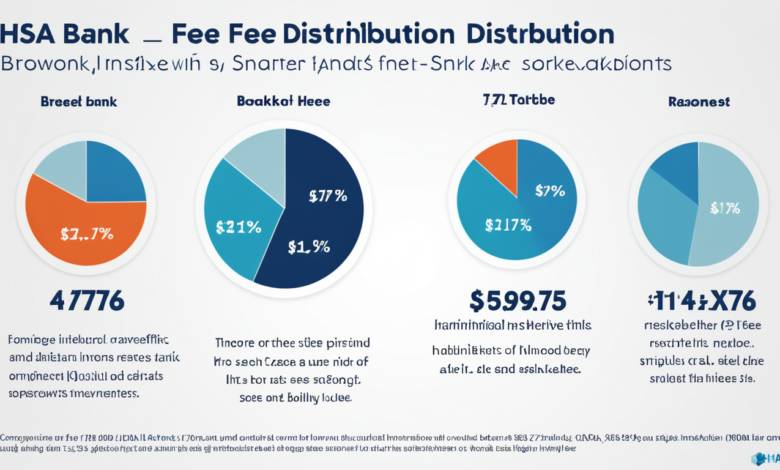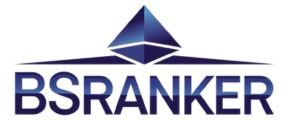HSA Bank Fee Distribution 1.75 Breakdown for Smarter Investments

Introduction
A Health Savings Account HSA Bank Fee Distribution 1.75 is a special and flexible tax-deferred savings plan. It is used to save for upfront medical costs and other qualified medical expenses. To get the most benefit from your HSA, it’s essential to consider the fees associated with it. One example of these fees is the HSA Bank Fee Distribution of 1.75%. This article provides a step-by-step analysis of the 1.75% HSA bank fee. It explains how this fee impacts your HSA investments and offers tips on saving more and managing your HSA money wisely.
Understanding HSA Accounts and Investment Fees
HDHP-related accounts allow contributions before tax. They also make growth tax-free if used for approved medical costs. HSAs help ensure that healthcare costs are met. These accounts are also favored for investment purposes. HSAs provide a tri-fold tax shelter — contributions, growth, and withdrawals for healthcare expenses are tax-free. However, like any investment product, investors need to consider the costs involved in using HSAs.
The Importance of Knowing Your HSA Bank Fee Structure
Fees can also sway your HSA investment potential for the long term. The Fee Distribution 1.75 represents an annual or monthly fee. This fee applies to management, administration, and other HSA-related charges. Understanding how commission is split is important. It helps to know why these fees exist. Knowing their effect can help boost investment returns. This knowledge can lead to better investment decisions.
Breaking Down the HSA Bank Fee Distribution 1.75
Let me make a deeper focus on the HSA Bank Fee Distribution 1.75 fee and explain what it is and how it influences the further HSA balance increase.
Account Maintenance Fee (0.50%)
Some of the 1.75% including an average of 0.50% is set aside for account maintenance. This covers:
- Administrative Costs: brokers need to process contributions, withdrawals and keep records of their receipts as well as disbursements.
- Account Support: Offers helpdesk services for the account holders whether through on-line means or through call.
- Regulatory Compliance: Safeguards your HSA from breaking federal or state laws therefore safeguarding your tax advantages.
Impact on Investment Growth:
This fee supports necessary servicing but slightly slows down the total growth of your HSA. Some of these are DDA charges, which you can avoid by either minimizing your withdrawals or automating them.
Investment Management Fee (0.75%)
The next HSA Bank Fee Distribution 1.75 usually belongs to the investment manager side of the HSA. This fee supports:
- Portfolio Management: Pays for administration of the investment options available within the HSA including mutual funds, stocks and ETFs.
- Market Analysis and Strategy: HSA managers conduct research and strategy formulation to meet HSA investment growth and risk profile offered to the public.
- Performance Monitoring: Continual assessment of fund performance, fund shifts to meet either stability or returns according to the market conditions.
Impact on Investment Growth:
To minimize the impact on your asset returns, avoid this fee, which providers charge on the investment costs of assets within your account, by using low-cost funds and limiting frequent rebalancing.
Custodial and Transactional Fees (0.25%)
The company allocates the remaining 0.25% to cover custodial and transactional costs, which may include.
- Custodian Services: Managers are responsible for keeping funds of investors in trust with special consideration being given for taxation relief.
- Transaction Processing: This fee is charged for all the credit balances and debits of purchase and sale of each investment.
- Security and Compliance: Guarantees the integrity of the money and checks and makes sure that the HSA provider is in accordance with tax laws and he/she protects individuals’ data.
Impact on Investment Growth:
At first glance, you may find such charges insignificant, but over the long run, they accumulate through multiple transaction capacities. Reading and avoiding custodian charges as much as possible allows you to retain as much of your investment profits as possible.
How the HSA Bank Fee Distribution 1.75 Impacts Investment Strategy
That way the investors will be in a position to determine the actual cost of the HSA charged at 1.75% as broken down below. Here’s how to use this knowledge to make smarter investment choices:
- Compare HSA Providers: Contrary to HMOs, fees differ from one HSA provider to another. Consider other HSA banks and perhaps look for one that has cheaper fees or better investment offerings that meet your needs.
- Focus on Low-Cost Investment Options: With low-cost index funds or ETFs, you will limit the influence of the 0.75% investment management fee.
- Leverage Tax Benefits: Make maximum use of your HSA to pay medical costs after you retire since withdrawals will be tax-free. At the same time, try to allow the account to grow by not using it to pay for normal things like medical bills.
- Automate and Optimize Contributions: Using advice on how to reach goals, set up automatic contributions and strongly think about maximizing your HSA each year. On this front, automation of deposits assists in minimizing a number of administrative and transaction fees.
- Keep Withdrawals Minimal: To exclude the administrative and transactional portions of the fee, it is unnecessary to make many withdrawals. This approach lets your HSA remain untouched for the longest amount of time possible so that interest can accrue on your money.
- Consider Investing for the Long Term: Do not use your HSA as a checking account where you shop until you have enough money to drop by the pharmacy. This way you optimize growth as your input has sufficient time to grow and probably cover the annual fee.
Alternatives to Minimize HSA Fees
If the 1.75% fee seems high, or you’re seeking lower-fee options, here are a few strategies to consider:
- Switch to a Low-Fee HSA Provider: A large number of providers are characterized by reasonable prices and a rich portfolio of investment opportunities. Consider operators who clearly explain their fees and have no extra charges.
- Employer-Sponsored HSA Plans: If so, some employers even contribute a portion of HSA fees to decrease the costs that employees have to bear.
- Use the HSA for Cash Holdings: Certain accounts enable the holder to associate a part of the funds in a cash feature with no investment fees thus would suit a person planning to keep the HSA funds intact.
Why HSA Fees Matter for Smarter Investments
HSA fees are often overlooked by clients because they seem small. However, when combined with other investments, these fees can slow down the growth of your portfolio. Now that we know about the HSA Bank Fee Distribution of 1.75, it’s important to be aware of it. You can also use the methods mentioned above to help maintain a healthy balance in your HSA. Making smart decisions now can help prepare you for future healthcare costs. This is especially important as healthcare can become very expensive in old age.
FAQs
What is the HSA Bank Fee Distribution 1.75?
The HSA Bank Fee Distribution 1.75 typically refers to an annual or monthly fee, totaling 1.75%, charged to HSA account holders for account maintenance, investment management, and custodial services.
How is the 1.75% fee distributed?
The fee is generally split across three areas: 0.50% for account maintenance, 0.75% for investment management, and 0.25% for custodial and transaction services.
How does the HSA fee affect my account growth?
The fee reduces your account’s overall return, which can impact long-term growth. Minimizing frequent transactions and choosing low-cost investments can help offset these fees.
Can I avoid the HSA Bank Fee Distribution 1.75?
While it may not be entirely avoidable, you can reduce fees by comparing providers, choosing low-cost investment options, and taking advantage of employer-sponsored HSA benefits.
Why should I consider fees when choosing an HSA provider?
Fees directly impact your HSA balance and growth potential. Lower-fee providers and smart investment strategies can help you retain more of your savings for future healthcare needs.
Conclusion
Achieving the optimum outcome of using an HSA means also knowing all the expenses associated with having an HSA. There are often certain fees, such as the HSA Bank Fee Distribution 1.75. Understanding the purpose of these fees can be helpful. Knowing about these fees can assist in working against them. This can lead to better investment strategies. Choosing a lower-fee provider is one way to optimize these fees. With the right strategy, an HSA can become an excellent investment vehicle.




